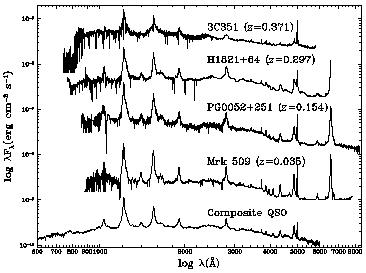


The launch of the Far Ultraviolet Spectroscopic Explorer (FUSE) on 1999 June 24 provided a new tool in orbit for studying the far-UV spectra of AGN. FUSE observations cover the 905-1187 Å band with a resolving power of ~ 20,000. The mission concept is described by Moos et al. (2000), and the initial in-flight performance is presented by Sahnow et al. (2000). Basically, four separate primary mirrors gather light for four prime-focus, Rowland-circle spectrographs. Two of the optical systems employ LiF coatings to cover the 990-1187 Å band, and the other two use SiC coatings to get reflectivity down to wavelengths as short as 905 Å. Holographically ruled gratings disperse the light entering through the selected entrance slit (a 30" x 30" aperture for most observations) and form an astigmatic image on the two-dimensional photon-counting microchannel-plate detectors. The detectors have KBr photocathodes and delay-line anode readouts that provide the location and arrival time of each photon event.
FUSE began routine observations in December 1999, and here I will present
the first results from the PI-team program directed toward the study of AGN.
This program piggy-backs off data acquired as part of the larger PI-team
study of O VI absorption in the Galactic halo and the study of the
deuterium to hydrogen ratio along different sight lines through the
Galactic halo and high-velocity clouds. As part of these programs,
the ~ 100 UV-brightest AGN are being surveyed at low to moderate
signal-to-noise (S/N) ratios to determine the best sight lines for further
study. A few intrinsically interesting AGN are being observed at high S/N
as part of the "medium-size" team project as are a few Seyfert 2 galaxies.
In addition to the FUSE observations, an HST snapshot program is obtaining
contemporaneous spectra at longer UV wavelengths using the STIS G140L and
G230L gratings, and current-epoch ground-based optical spectra covering
~ 3500-9000 Å are being obtained by R. Green and M. Brotherton at KPNO.
The primary scientific goals of the FUSE AGN program are to
(1) determine the far-UV continuum shape of low-redshift AGN;
(2) examine the strength and profile of the broad O VI emission line;
(3) search for intrinsic O VI and Lyman-limit absorbers and study
their kinematics;
(4) search for intrinsic H2 absorption that may be associated
with the obscuring torus; and
(5) study the strengths of other far-UV resonance lines such as C III
 977 and N III
977 and N III
 991.
991.
As of 2000 July 1 we have observed 47 AGN at z < 1. 46 of these are Type 1 AGN; one is the Seyfert 2 Mrk 463, which was not detected. Of the 28 Type 1s with z < 0.15 (so that O VI falls in the FUSE bandpass), strong, broad O VI emission is visible in all but one (Pks 0558-504). Four of the 28 also show strong narrow O VI emission lines. Approximately 40% (11/28) show intrinsic O VI absorption. No intrinsic Lyman limits are detected, and no intrinsic molecular hydrogen absorption is visible. Representative spectral energy distributions for 4 of the AGN in this sample are shown in Fig. 5. Note the overall qualitative similarity of these AGN spectra to the Zheng et al. (1997) composite. While it is too early to draw definitive conclusions, this suggests that there is little evolution in mean spectral shape from redshifts of ~ 1, as represented by the composite, to the current epoch.

|
Figure 5. Combined FUSE, HST, and ground-based data for four AGN show spectral energy distributions peaking at ~ 1000 Å, in qualitative similarity to the composite QSO spectrum of Zheng et al. (1997). The sharp drop at the short wavelength end of the 3C 351 spectrum is a foreground Lyman-limit system at z = 0.22. |